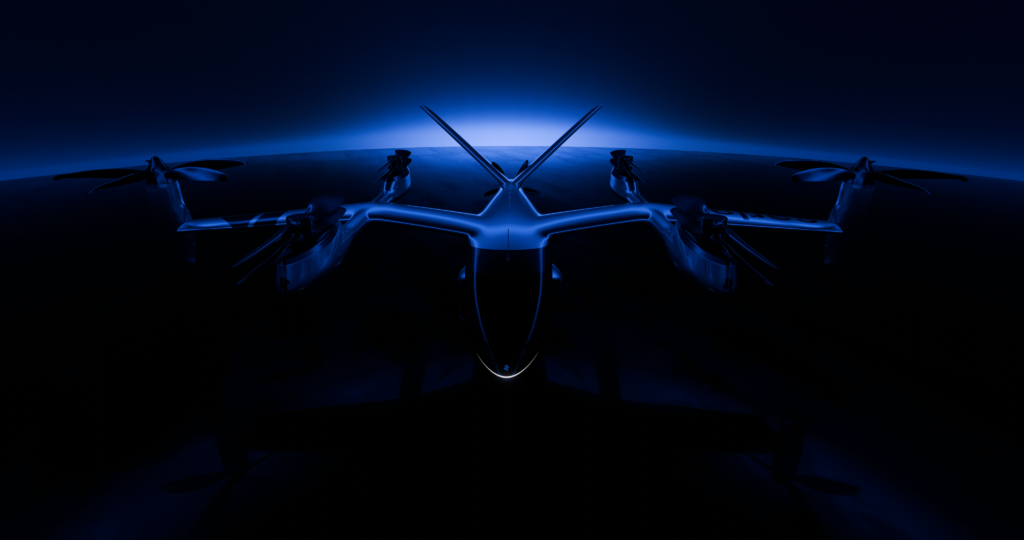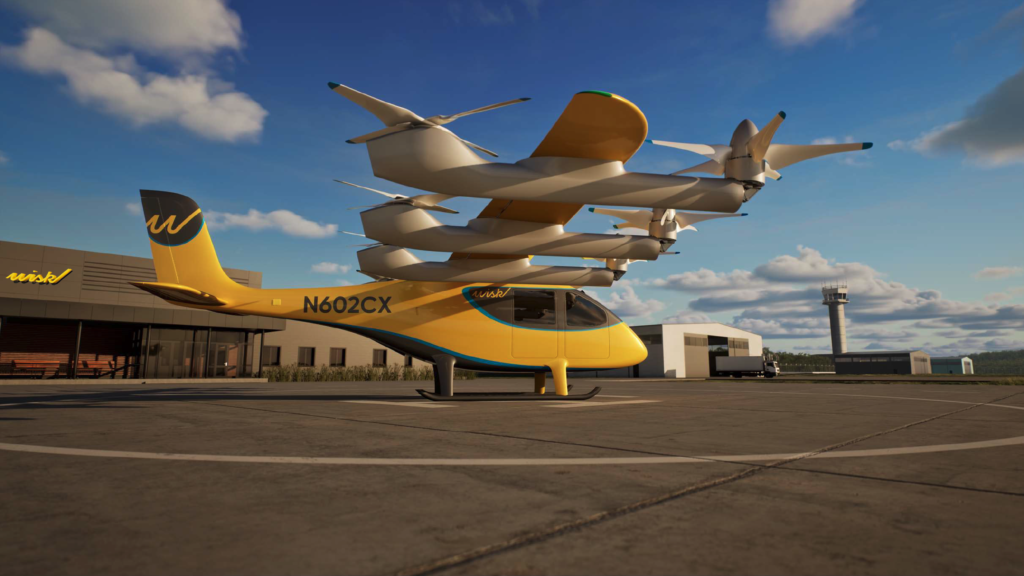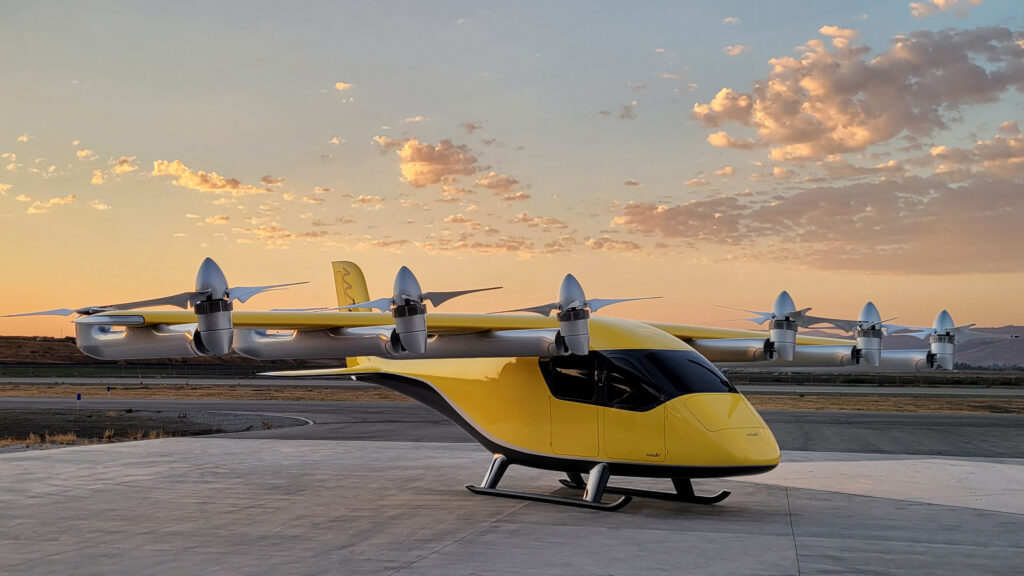By Cdr Rahul Verma

Introduction: Vertical Power, Redefined
“The future of warfare will not be fought on runways, it will be launched from rooftops, forest edges, and mountaintops”.
What once sounded like science fiction, quiet electric aircraft lifting vertically from city rooftops, is now reshaping the way wars are planned, fought, and sustained. At the 2025 Paris Air Show, electric vertical takeoff and landing (eVTOL) aircraft are no longer experimental novelties. They are combat-ready, logistics-enabling, ISR-capable machines that are forcing a rewrite of battlefield doctrine.
In hangars once reserved for fast jets and cargo behemoths, autonomous platforms like Wisk’s Gen 6, Volocopter’s 2X, and India’s Sarla Shunya are being presented not just as commercial disruptors but as military multipliers. These are not retrofitted aircraft but born-dual-use systems designed from day one to operate where traditional aviation can’t. Compact, attritable, and highly manoeuvrable, they thrive in the complex, urban, and contested environments that define 21st-century conflict.

This transformation didn’t happen in a vacuum. It was accelerated by the brutal pragmatism of asymmetric warfare, the technological acceleration of autonomous systems, and a growing need for resilient, dispersed logistics in a world where every runway is a target. The convergence of civilian innovation and defence urgency has made one thing clear: the future of airpower is vertical, unmanned, and operational now, not decades from now.
Paris 2025: When Civilian Innovation Meets Combat Utility
I believe that “Dual-use is no longer a convenience, it’s a doctrine.” At the 2025 Paris Air Show, the Advanced Air Mobility (AAM) pavilion isn’t a sideline showcase, it’s centre stage for the next leap in military capability. This year’s lineup of eVTOL systems would demonstrate how civil aerospace innovation is crossing the threshold into military application at unprecedented speed. These platforms are not being retrofitted for defence, they’re being engineered with dual roles in mind from the ground up.
Wisk Aero’s Gen 6, for example, as given on its website, features a 500 kg payload and a front cargo bay dubbed the “frunk”, making it as ready to carry ammo and medical kits as passengers. Originally developed for autonomous air taxi services, the Gen 6 in the present geopolitical situation now draws interest from defence procurement teams looking for unmanned logistical assets that don’t require airstrips, pilots, or maintenance convoys. Meanwhile, Volocopter’s 2X made history with the first public eVTOL flight in France, during the Paris Olympics, underscoring just how quickly these platforms are moving from concept to airspace.

But the real headline is Sarla Aviation’s Shunya, a 7-seat Indian eVTOL that has reported completions of some test flights and is already being configured for tactical deployment. Modular payload bays, ISR kits, and future high-altitude prototypes put it in direct contention as a flexible battlefield asset. Its development model, combining indigenous manufacturing, public-private R&D, and integrated airport infrastructure, offers a blueprint for scalable militarization of urban air mobility platforms. Hope to see Shunya at Paris 2025, signalling that the Global South is entering the defence innovation race on its terms.
Why Militaries Are Betting Big on Vertical Autonomy
The strategic appeal of eVTOLs lies in their trifecta of advantages:
- No Runways Required. eVTOLs can operate from tight, rugged spaces, desert outposts, mountain ledges, or city rooftops. This is invaluable in modern theatres where traditional airfields are either compromised or non-existent.
- Zero Pilot Risk. Autonomous variants mean no human lives are placed in harm’s way. This opens the door to bolder, higher-risk missions with lower political cost.
- Agile and Attritable. Unlike legacy aircraft, many eVTOL platforms are relatively cheap and designed to be expendable. That makes them ideal for saturation tactics, rapid ISR, and swarm-based logistics.
Reimagining Military Logistics: eVTOLs as the Backbone.
Defence logistics is transforming, and eVTOLs are leading the charge. Here’s how they’re redefining the military supply chain:
- Last-Mile Delivery in Hostile Zones. Autonomous cargo drones bypass IED-ridden roads and deliver supplies directly to frontline platoons or isolated bases.
- Medical & Emergency Operations. Battery or hydrogen-powered eVTOLs carry blood, medicine, or trauma kits into cut-off regions within minutes.
- Swarm Logistics for Saturation Resupply. Fleets of small, semi-autonomous eVTOLs operate 24/7, delivering distributed payloads that overwhelm traditional defences and maintain a persistent operational tempo.
- Predictive Maintenance. Onboard diagnostics and AI-driven maintenance forecasting reduce downtime and improve fleet readiness.
As Robert McKinney, technical manager for the ULS-A JCTD Marine Corp Warfighter Lab, stated, “Without a man in the loop, losses are minimal and there are no humans at risk… We’ll keep trucks off the road and use technology so that our troops get what they need, when they need it.”
The Mountain Challenge: eVTOLs in the Himalayas
“Altitude doesn’t just test machines, it tests intent. Only the most adaptive platforms survive above 15,000 feet.”
The Himalayas present a crucible for any aircraft and eVTOLs, it’s the ultimate stress test. At elevations where oxygen is thin, temperatures plunge below -30°C, and winds shear unpredictably, conventional drones and helicopters falter. Reduced air density slashes lift efficiency, while cold-weather conditions degrade battery output and sensor reliability. Add to this sparse infrastructure, limited refuelling options, and shifting weather windows, and it becomes clear, eVTOLsoperating here must be purpose-built, not adapted.
The current evolution in vertical platforms is addressing these extremes head-on. High-performance propulsion systems with larger rotors and optimized blade geometries are being paired with cold-weather thermal management that preserves energy output in freezing conditions. Rotor de-icing, sensor shielding, and adaptive flight controls are no longer enhancements; they’re baseline requirements. Hybrid-electric and hydrogen-fuelled systems offer the range and energy density needed to fly extended sorties, even when weather windows are narrow and refuelling infrastructure is minimal. Modular payload configurations allow the same platform to pivot between surveillance, logistics, casualty evacuation, or command relay, depending on mission urgency.
On the ground, doctrine is shifting to match. Militaries are mapping high-altitude vertiport networks, establishing mobile charging stations, and integrating eVTOL operations into mountain warfare logistics. These aircraft are being tasked with roles that previously required multiple assets, delivering supplies over landslide-prone passes, evacuating injured personnel from snowbound outposts, or maintaining ISR coverage over contested ridgelines. What’s emerging is not just a new aircraft type, but a new operating paradigm, one where vertical lift is decoupled from runways, pilots, and weather constraints, and where the Himalayas, once an aviation bottleneck, become a proving ground for next-generation combat mobility.
And as tensions persist across the Line of Actual Control, every sortie that doesn’t require a runway and doesn’t risk a pilot is one that shifts the tactical balance.

Market Momentum: The $23 Billion Question
The global market for Urban Air Mobility (UAM) and eVTOL systems is accelerating, fast. Projected to grow from $4.6 billion in 2024 to over $23 billion by 2030, this expansion is being fuelled not just by commercial ambitions but by defence planners seeking scalable, flexible air solutions for dynamic threat environments. What was once seen as civilian infrastructure, air taxis, vertiports, and autonomous delivery, is now being mapped into war games and readiness exercises.
This growth is not speculative. Defence R&D investments in VTOL platforms, autonomous logistics, and airborne ISR have surpassed $2.8 billion annually across NATO and Asia-Pacific nations. Military exercises increasingly simulate scenarios involving unmanned air corridors, swarm saturation tactics, and battlefield resupply by vertical drones. As energy technologies improve, particularly hybrid-electric and hydrogen systems, the payload-range trade-off that once limited eVTOL potential is steadily dissolving. What remains is a strategic opening for nations to redefine mobility, not just upgrade it.
The challenge is no longer technology, it’s procurement philosophy. Defence ministries must move beyond monolithic acquisition timelines and toward rapid prototyping, field-testing, and modular integration. Systems that can flex across peacetime logistics, civil support, and wartime operations should be prioritized. Infrastructure must also be dual-use by design, civilian vertiports and drone corridors must be pre-authorized for military activation in crisis. Nations that embrace this convergence will not just lead the air mobility race, they’ll dictate the tempo of future conflicts.
The Final Word: Airpower Rewritten in Vertical Lines
“The sky is no longer a domain to dominate, it is a dimension to navigate, silently, autonomously, and everywhere at once.”
As a helicopter pilot, I don’t see eVTOLs as a replacement for rotary aviation but as its natural evolution. The rotorcraft has always embodied tactical flexibility, the ability to hover, to extract, to deliver where others can’t. eVTOLs take that foundational capability and extend it into new domains, quieter, more sustainable, often unmanned, and increasingly autonomous. They won’t replace the Black Hawk, the Apache, or the Dhruv, but they will complement them. They’ll handle the repetitive, the high-risk, the unmanned first-ins, freeing manned helicopters to do what they do best, make decisions in dynamic combat environments. The rotary wing legacy lives on, but now it multiplies, expands, and elevates into a system of systems that reshapes vertical warfare.
This vertical revolution is no longer hypothetical. At Paris in 2025, it’s on the flight line, it’s airborne, and it’s operational. What we are witnessing is not just the emergence of new platforms but the birth of a new doctrine. Airpower is being unbundled from runways, untethered from pilots, and rebuilt around the principles of speed, survivability, and swarm-scale flexibility. eVTOLs, once dismissed as civilian novelties, are now redefining mobility, not as a means of transport but as an instrument of influence, deterrence, and dominance.

This isn’t just evolution, it’s divergence. The logic of past air dominance was mass and range. The logic of the future is persistence, distribution, and low-signature agility. Vertical platforms operating without traditional infrastructure can create unpredictable vectors of force, delivering supplies to cut-off units, extracting wounded under fire, or placing ISR assets behind enemy lines without risking a single pilot. The nation that learns to choreograph hundreds of these assets in real time will own the battlespace, not through brute force, but through dynamic, asymmetric presence.
The question facing defence leaders now is not whether to integrate eVTOLs into their force structure, it’s how fast they can adapt before the tactical edge slips away. Airpower, as we’ve known it for a century, has been redrawn. Not with supersonic engines or stealth coatings, but with electric rotors, zero-emission propulsion, and algorithmic intelligence. The battlefield is going vertical, and those who fail to ascend will find themselves grounded not just technologically, but strategically.
Cdr Rahul Verma (r), former Cdr (TDAC) at the Indian Navy, boasts 21 years as a Naval Aviator with diverse aircraft experience. Seaking Pilot, RPAS Flying Instructor, and more, his core competencies span Product and Innovation Management, Aerospace Law, UAS, and Flight Safety. The author is an Emerging Technology and Prioritization Scout for a leading Indian Multi-National Corporation, focusing on advancing force modernization through innovative technological applications and operational concepts. Holding an MBA and Professional certificates from institutions like Olin Business School, NALSAR, Axelos and IIFT, he’s passionate about contributing to aviation, unmanned technology, and policy discussions. Through writing for various platforms, he aims to leverage his domain knowledge to propel unmanned and autonomous systems and create value for Aatmannirbhar Bharat and the Indian Aviation industry.




